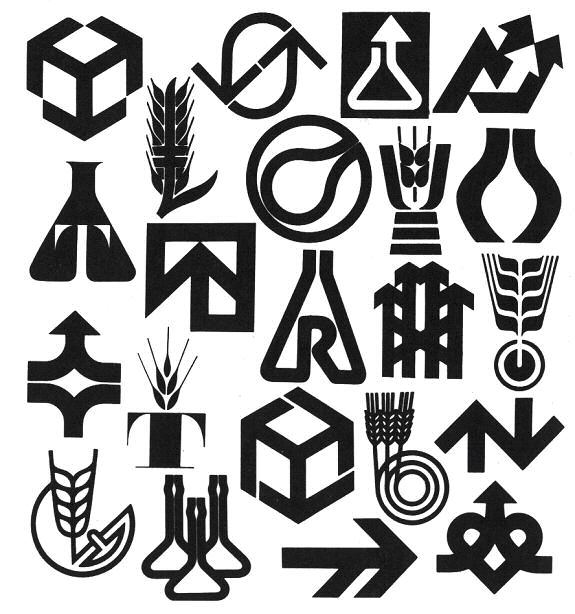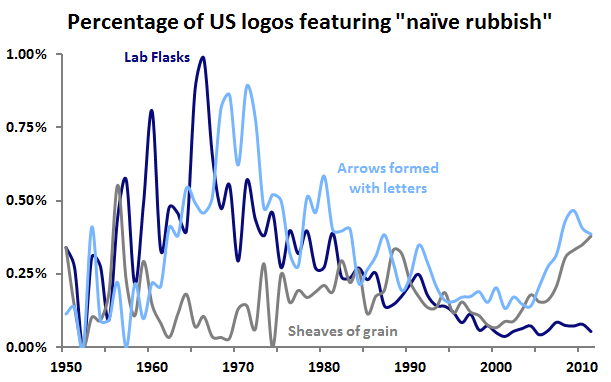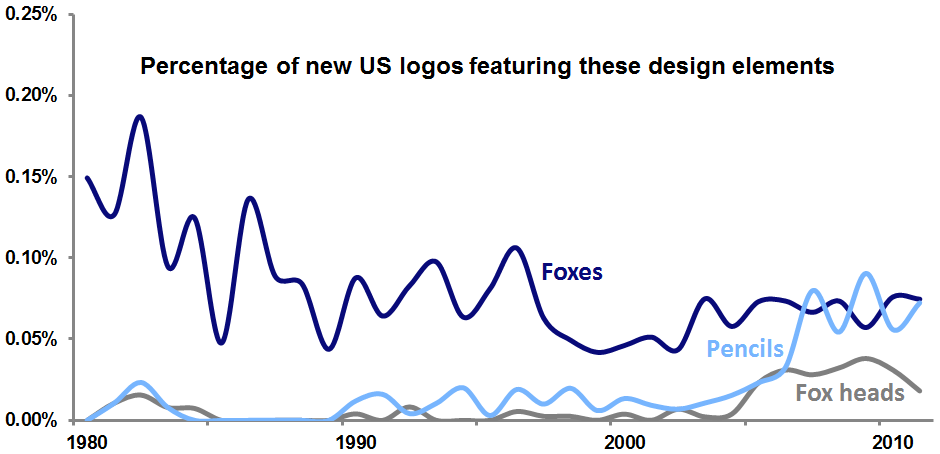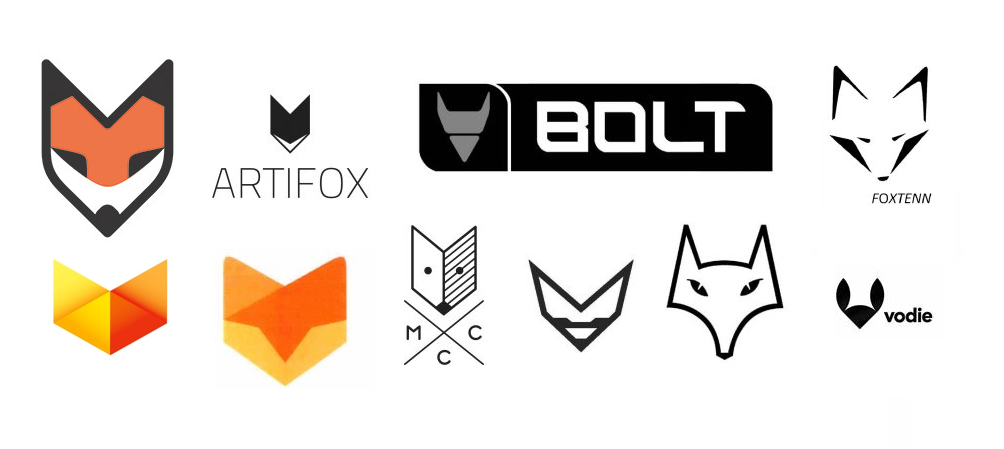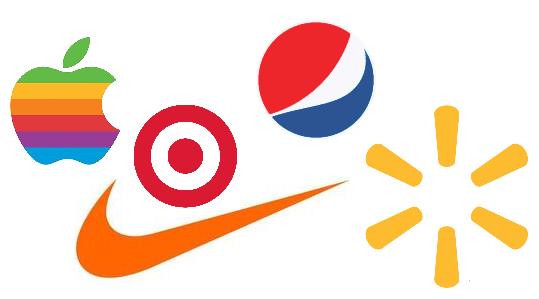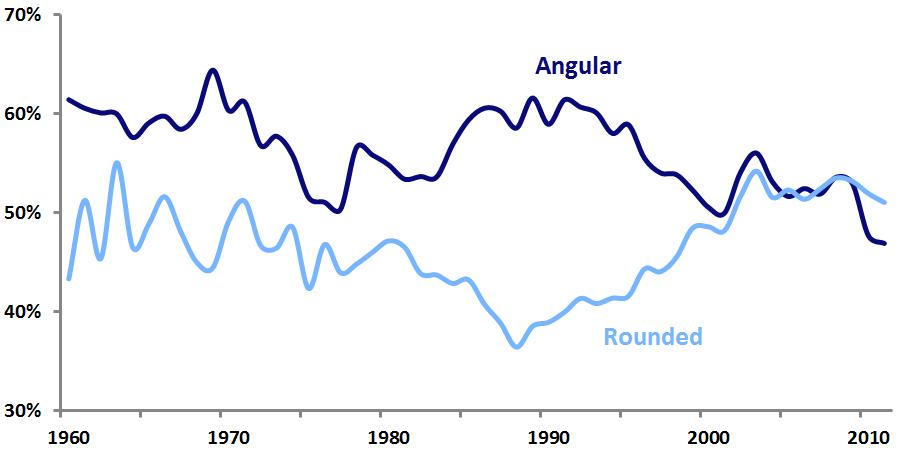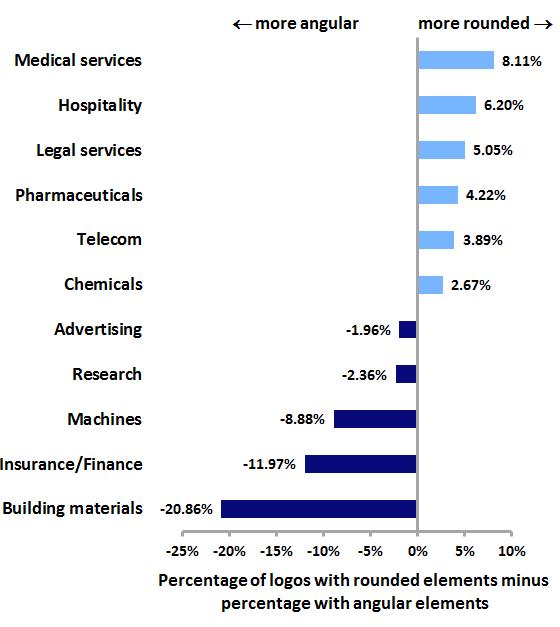
Later this week, Yahoo will unveil a new logo, replacing the wordmark (above) that has remained virtually unchanged since 1996, aside from a 2009 switch from red to purple. Leading up to this unveiling, Yahoo has been featuring a new logo every day in its “30 Days of Change” campaign. Yahoo’s Chief Marketing Officer Kathy Savitt has already revealed that the new mark will retain the color purple and the “iconic” exclamation point, and each of the “30 Days” logos has simply been a wordmark rendered in a different typographic style, so it seems that the change will not be a drastic one.
The month-long buildup to the new logo’s debut has succeeded in attracting interest and, by easing people into the idea of change, has perhaps served to prevent a Gap-style backlash. Speculation about the new logo has focused on Yahoo CEO Marissa Mayer’s inclination toward data-driven design decision-making, with particular attention paid to her famous test of 41 shades of blue at Google. Indeed, Yahoo seems to have tested new logo designs on its site in 2008 and 2012 (below), so this week’s change should not come as a big surprise.

Analysis of United States Patent and Trademark Office data on logo designs can allow us to see where the current Yahoo logo stands in relation to nationwide and industry-wide logo design trends.
The Yahoo name, an acronym for “Yet Another Hierarchically Officious Oracle,” is a nerdy joke that probably shouldn’t have survived the nineties, but is far too familiar to change now. Its exclamation point is certainly one of Yahoo’s most distinctive brand elements. Given that “Yahoo!” is itself an exclamation, it’s not surprising that it is there. Companies previous to Yahoo certainly felt inclined to include it in their logos in 1985 and 1988:

Over the years, wordmarks (that is, logos that are words presented in a stylized form) ending in exclamation points have become increasingly common, as the graph below illustrates. Currently, 1.17 percent of new wordmarks end with an exclamation point, while among internet wordmarks, the figure is 1.52 percent. Yahoo certainly seems to have been a trendsetter here, part of a 1995 spike in which 2.42 percent of all new internet wordmarks ended with exclamation points.
Percentage of new wordmarks ending in exclamation points
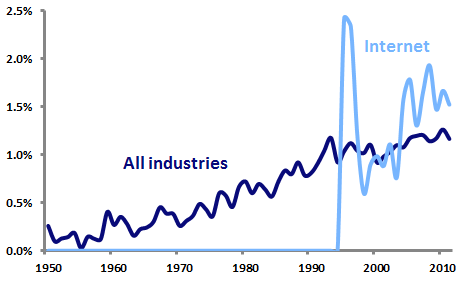
And, as shown below, internet firms are significantly more likely to use wordmarks ending in exclamation points than are companies in many other industries.
Percentage of wordmarks ending in exclamation points in selected industries
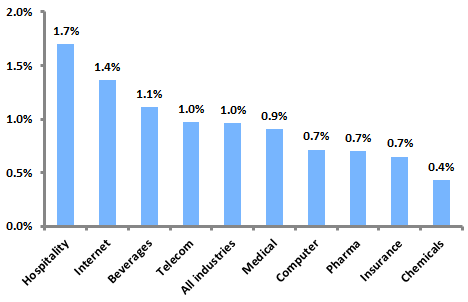
In all though, the exclamation point belies a certain cheesiness and feels like a cheap marketing gimmick. While Yahoo presents an exception, in general, wordmarks ending in exclamation points tend not to last: of the wordmarks filed for registration with the USPTO since 1990, 44.1 percent have survived in use to the present, while just 39.2 percent of exclamation point wordmarks are still around.
After wavering for years between red and purple, Yahoo has gone “all in” on purple as its defining color. Purple is certainly an “ownable” color for Yahoo in that it is relatively rarely used in the corporate world. The graph below shows that purple has consistently appeared in only about five percent of US logos over the past several decades. Among new internet-related logos, the use of purple shot up to 9.52 percent in 1996, another spike that Yahoo certainly contributed to. Today, purple is found less often among internet logos than in logos as a whole.
Percentage of new logos featuring the color purple
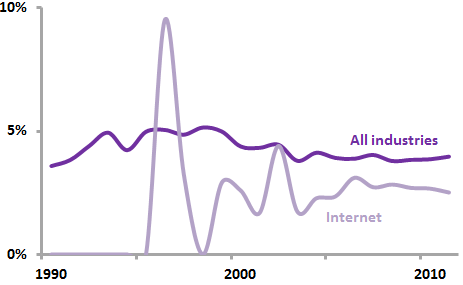
Further analysis shows that, across time, purple appears most often in the logos of medical and pharmaceutical companies and less often in internet logos.
Percentage of logos featuring purple in selected industries
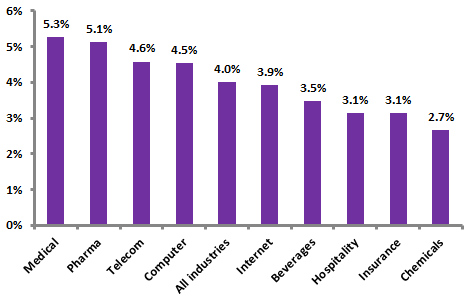
Yahoo’s apparent decision to stick with a wordmark-only logo (as opposed to a symbol-only or symbol-plus-wordmark logo) runs against contemporary logo trends. While Microsoft, last year’s most prominent new logo adopter, opted to ditch its wordmark for a wordmark/symbol combination, Yahoo seems to be standing pat. Although its “Y!-bang” mark might be considered a symbol of sorts, it hasn’t been used very prominently to date. Analysis of USPTO data shows that, among new wordmarks today, only about one-fifth stand alone without a symbol. The figure is slightly lower for internet wordmarks, which have seen a steep dropoff in solo wordmarks since the dot-com boom of the late nineties.
Percentage of new wordmarks unaccompanied by a symbol
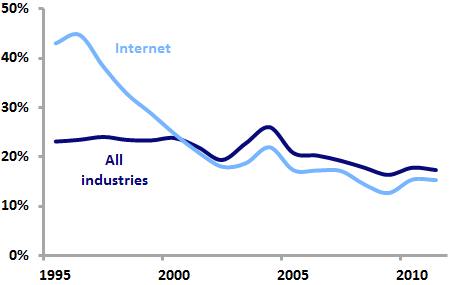
Indeed, internet wordmarks are among the least likely to be unaccompanied by a symbol, meaning that Yahoo is going against the industry trend.
Percentage of wordmarks unaccompanied by a symbol in selected industries
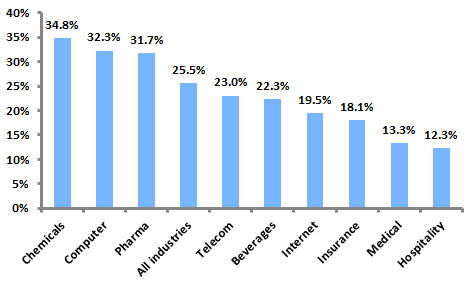
The three main characteristics of Yahoo’s current logo (purple, solo wordmark, ending with an exclamation point) saw higher levels of popularity among internet-related logos in the late 1990s, implying that Yahoo’s image may be tied to that time period, and suggesting that the company is indeed in need of an updated logo. But all three of these characteristics seem likely to remain prominent in this week’s new logo. To enable Yahoo to escape the dot-com era look, the typographical changes incorporated in the new logo will have to be quite strong.

